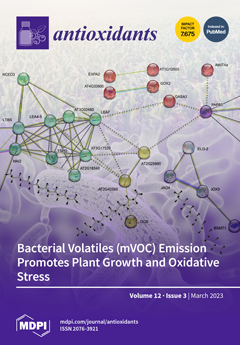Background: Selenium and coenzyme Q
10 (SeQ
10) possess antioxidant and anti-inflammatory properties, potentially mediated via Sirtuin1 (SIRT1). We aimed to investigate the influence of a SeQ
10 intervention on SIRT1 concentration, with potential interactions with microRNAs.
Methods: In this
[...] Read more.
Background: Selenium and coenzyme Q
10 (SeQ
10) possess antioxidant and anti-inflammatory properties, potentially mediated via Sirtuin1 (SIRT1). We aimed to investigate the influence of a SeQ
10 intervention on SIRT1 concentration, with potential interactions with microRNAs.
Methods: In this sub-study of a prospective double-blind placebo-controlled clinical trial, healthy subjects (mean age 76 years) were randomized to receive an active treatment (
n = 165, combined 200 µg/day of Se and 200 mg/day of Q
10) or a placebo (
n = 161). SIRT1 concentration and microRNAs were measured with ELISA and PCR, respectively.
Results: After four years, SIRT1 concentration was increased in the active treatment group, with mean (SD) ng/mL of 469 (436) vs. 252 (162),
p < 0.001, and decreased in the placebo group, 190 (186) vs. 269 (172),
p = 0.002, and the differences between the groups were significant (
p = 0.006, adjusted). Those who suffered CV death during a 10-year follow-up (
n = 25 and
n = 52 in the active treatment and placebo groups, respectively) had significantly lower baseline SIRT1 concentrations compared to the survivors (
p < 0.001). MiR-130a-3p was significantly downregulated during the intervention and correlated inversely with SIRT1 at baseline (r = −0.466,
p = 0.007).
Conclusion: The increased SIRT1 concentration after the SeQ
10 intervention associated with reduced CV mortality, partly mediated via miR-1303a-3p, suggests that SIRT1 is an additional mediator of the intervention, preventing vascular ageing.
Full article






